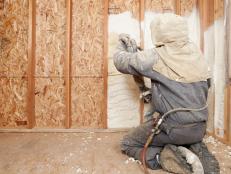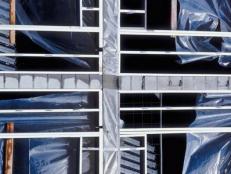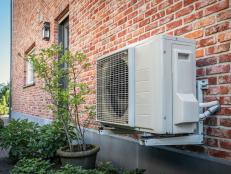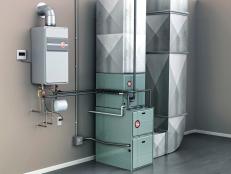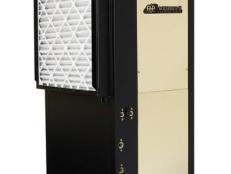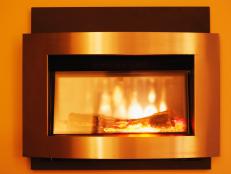Sealing a Home's Air Leaks
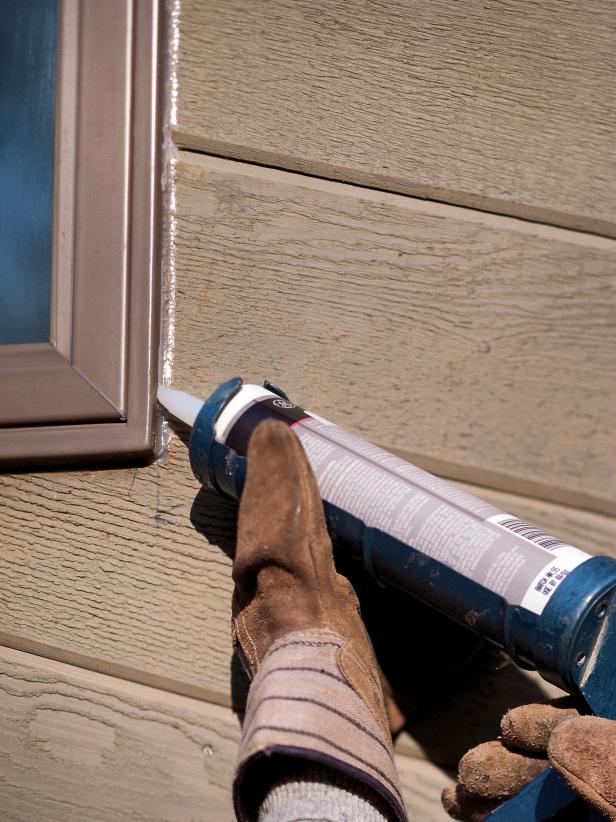
Comstock
Until recently homes often relied on air leakage for ventilation. Stale air, odors and irritants would leave a home through cracks and crevices and fresh air would leak in to replace it. The problem was that irritants and odors from the outside would leak in as well, not to mention all the wasted heating and cooling dollars that would also result.
"The main reason to seal a home's leaks is that it is the only way for a home to be both energy-efficient and healthy," says Carl Seville, a former executive and co-founder of Sawhorse Inc., a "green" remodeling company in Atlanta.
Now an independent consultant specializing in environmental building issues, Seville stresses that well-sealed homes are far more comfortable and healthy for their occupants. "Air leakage leads to excessive moisture in the summer and extreme dryness in the winter, plus these homes have far more dust and other irritants floating around inside," he says. "Whether you're building a new home or renovating an old one, it pays for both you to pay close attention to sealing it as tight as possible."
What to Use
For best results, use a combination of the following materials. As always, read the manufacturer's label to make sure the material is applicable for a particular situation. "Durability is more of an issue with exterior materials because that's where you get breakdown caused by UV radiation and contact with moisture," Seville says. "On the inside, you're most often better off using what's easiest to work with."
Caulk. Effective on small gaps and cracks (less than a half-inch). Special formulations for special applications (high-temp caulk around chimney flues, treated with mildewcide for damp areas, fire-stopping caulk at tops and bottoms of walls, etc.). May need backer rod before applying.
Weather stripping. For sealing operable parts of doors and windows.
Gaskets. For use under sill plates and bottom plates of exterior walls. Special gaskets also are available for sealing outlets and switch covers on exterior walls.
Sheet goods. Air leakage only at poorly sealed joints or through unsealed penetrations. "It's very important that all drywall and sheet goods be well-glued to all studs and the top and bottom plates," advises Carl.
Certain insulations. Spray foams (such as Icynene) and some blow-ins (dense-packed cellulose) are excellent air-sealers.
Housewrap. "These make excellent air barriers, but only when they are installed with as few seams as possible, and all of those are well-sealed and taped," says Carl, who also stresses that all penetrations as well as the top and bottom edges past the plates must be taped.
"Most of the job of air sealing is finding the leaks," Seville says. "A blower door test can be very helpful. With new construction, you might want to run a test to make sure you've sealed everything during construction. With remodels, you should do it before to identify the leaks, and then afterwards to make sure you've got them all. Some guys even run the blower door test as they're sealing a house to monitor their progress."
Open Walls
Before you hang drywall, make sure the following areas are well-sealed:
Bottom plates. With sill gasket or caulk, caulk again after the drywall is up.
Band joist. Caulk or spray foam between top plate and band joist and band joist and subfloor. Also do the same at the rim joist on two-story houses.
Dropped soffits. Around cabinets, showers or for certain recessed lighting applications, install soffits after the taped ceiling has been installed, or in new construction (bare joists), make sure all joints and corners are well sealed with joint compound and/or caulk.
Windows and doors. Backer rod and caulk or spray foam (low expanding type formulated especially for windows and doors).
Penetrations. Electrical, plumbing and HVAC penetrations between conditioned and unconditioned spaces can be filled with a variety of materials.
Closed Walls
Boxes. Seal all switch, outlet and light fixture boxes to drywall using caulk. Same with bath and kitchen vent fans (may need foam for this application).
Ducts. Seal all air registers and/or duct boots to floor or wall with caulk or foam and sometimes mastic.
Plumbing. Penetrations through walls and floors can be sealed with foam.
Attic hatches/pull-down stairs. Make these airtight with secure latches and cover with rigid foam cover kits.
Some other suggestions to keep air leaks into and out of the house include the following:
- Seal all exterior penetrations (lights, phone, security, electrical, dryer vents, etc.) with exterior-grade caulk or foam.
- Minimize cuts in housewrap and tape all seams. If not using housewrap, seal all joints on exterior sheathing.
- Seal all HVAC ductwork if possible with mastic or approved foil tape.
This may be more difficult in renovations, but necessary in new construction.






